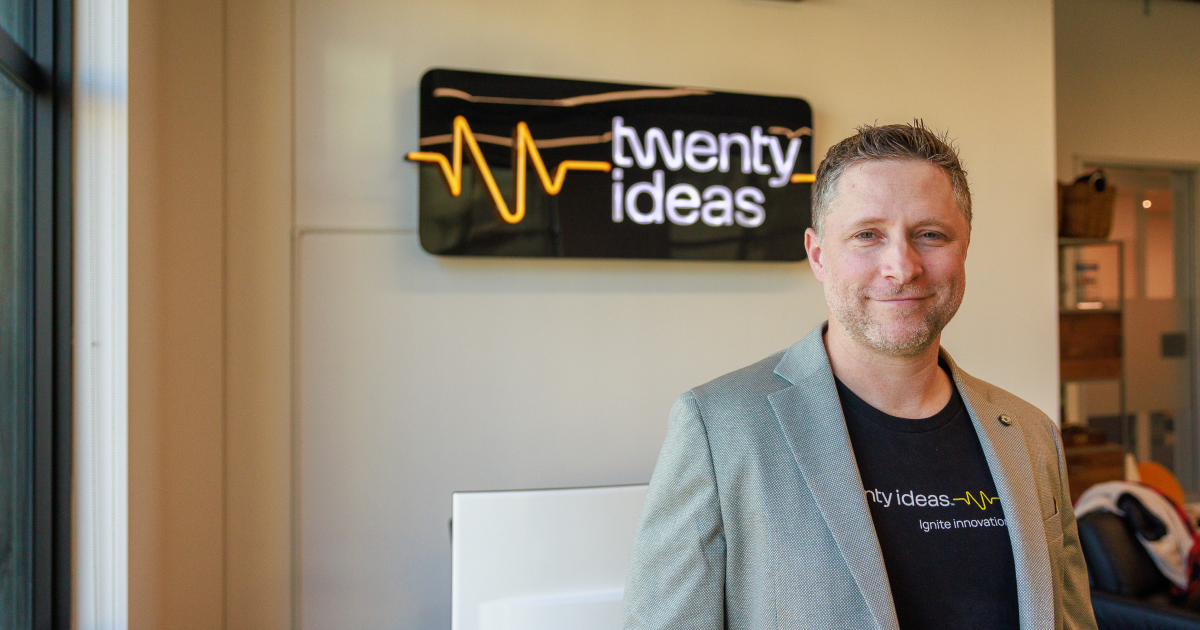
Building your first MVP: 5 things to know
Jan 16
6 min read
Entrepreneurship is risky. One of the best ways to minimize that risk is by building a Minimum Viable Product, or MVP, to get your idea out into the world.
Essentially, an MVP is a basic, minimalist version of the full product you hope to launch one day. It’s kind of like a marketing science experiment – by launching with an MVP, you can test how your idea works for and is received by real users, then adjust your features and priorities based on what you learn.
Usually, founders build an MVP fairly early in the development process. Whether it proves popular or not, building one helps founders learn more about their users and gives them a chance to observe how well their solution works in a real world setting.
Many successful businesses, including big name established companies like Airbnb and Uber, as well as newer rising digital health stars like PHC Global, started with an MVP.
Here are some important ideas to keep in mind if you’ve never built an MVP before:
- Start with research
- Focus on user pain points
- Plan to collect feedback
- Don’t expect perfection
- Launch is just the beginning
1. Start with research
As with most things, the more preparation you do before designing your MVP, the more you’ll be able to get out of it. Collect all the information already available about your target users, the problem you hope to solve, competitors in the market, and emerging threats and opportunities that could impact your idea’s ability to succeed. Once you’ve assembled the known facts, you can identify important unanswered questions and design your MVP to test them.
Here are a few research strategies to use to inform your MVP goals:
Identify your competitors. Are your potential users already using some other tool or service to try to address their problem? Identify these status quo solutions, then analyze what they are doing right, and where they are letting users down. Look for consistent gaps between what they offer and what people want, and make sure your idea aligns with one of those areas.
Ask questions. Use surveys, one-on-one interviews, focus groups, and other data collection methods to gather qualitative and quantitative information from potential users. Asking the right questions in the right way is important for getting unbiased, useful information, so frame your questions as objectively as possible. Whenever possible, ask about facts and past experiences, rather than feelings and hypotheticals (e.g., “What did you do the last time you needed to find a handyperson?” vs. “What would you do if you needed to find a handyperson?”).
Define your users. Create detailed customer personas that describe who your customers are, the problems they care about, and what they are willing to do to solve them. There may be different groups that need your product for slightly different reasons, or who share similar needs but have different levels of motivation. Understanding your potential users can help you prioritize and tailor your solution to the most aligned, receptive groups.

Focus on user pain points
Successful MVPs tend to solve a specific problem that’s important to your users, and do it better than the alternatives.
Defining your problem is the key to that success in two ways:
- It brings your priorities into focus, creating a clearer path to “viable” in your MVP.
- It helps you communicate your product’s value to potential users and/or investors: here’s a problem you care about, here’s how we help you solve it, and here’s how our solution is better than what you’re already doing.
One useful framework for finding and describing pain points is the user journey map. Once you’ve gathered enough information about how a certain problem plays out in real life, for real users, you can map out a typical, step-by-step series of events that the user experiences when attempting to solve it. Once you’ve established the timeline, plot the user’s feelings at each step, identifying the places where they feel the most distressed or discouraged.
Those points, when the user sits poised on the edge of victory or defeat, are where you should focus your solution, and your value proposition.
Plan to collect feedback
The most important thing you can get out of your first MVP launch is user feedback. Anything they tell you – positive or negative – is valuable.
An MVP that flops is not really a failure, as long as you come out understanding why it flopped. Thomas Edison famously tried over 4000 ways to make lightbulb, and counted each attempt a success – because he learned 4000 ways not to make a lightbulb.
Ensure that you have the tracking and monitoring tools set up to collect any information that could help understand your users’ interactions with your MVP. UX research is essential, and heat maps, time spent per screen/page, bounce rates, and other behavioral data offer unbiased information about what users are doing, which can help inform direct questions to users about why they do it. You can also try to ask users directly about their experience, and even provide some form of compensation for answering. Mobile apps often have built-in systems for ratings and reviews, triggered by push notifications. It’s important to not make such nudges too intrusive.In all cases, it is critical to be ethical and transparent about what user data you’re collecting, and what you will and will not do with it. You also need to take steps to protect your users’ data from being taken or used by unauthorized parties, both within your organization and without.

Don’t expect perfection
With sufficient preparation, you can create a useful MVP that demonstrates your idea’s potential – but it won’t be complete, and it isn’t meant to be. The point of an MVP is to get your big idea into users’ hands, so you can answer questions you couldn’t resolve with research alone. What do users like about your product? What do they hate? What must absolutely be added to the product for users to continue using it?
The information gained through your MVP launch will be critical to setting your future product priorities, as well as proving your idea’s worth to secure future funding. If your MVP isn’t successful, critically and objectively analyze the data and feedback you gather to determine the causes. It’s much less expensive to adjust an idea in its MVP phase than after it is fully developed.
Launch is just the beginning
A launch is your first opportunity to see how users react to your idea. Based on that, the next step is to build and iterate on your product based on that feedback. This iterative process will likely be ongoing throughout your product’s life span, though you will likely go through several cycles in quick succession after your initial MVP launch.
It’s normal to adjust your goals and vision during the course of refinement. Sometimes, founders discover that people actually prefer to use their MVP for something slightly different from what you originally intended. It’s also possible for different groups to use it in different ways. Valuable intel like this lets you adjust both your communications and the product itself to accommodate different user personas.
Building an MVP with Twenty Ideas
Do you have a great idea for a new app or platform?
Our end-to-end product development team has the strategic, design, and development capabilities to support project success.
We have helped founders launch dozens of MVPs over the past several years. We’d love to help you next!
Mike Biglan
Founder and CEO Mike Biglan has led the creation of transformative digital products adopted by millions of users–including digital therapeutics, AI-powered RPM platforms, an X-Prize-winning adult literacy intervention, and more. Mike also led the creation of Marco Polo, an acclaimed consumer-facing video messaging/streaming app with tens of millions of downloads.
by this author





